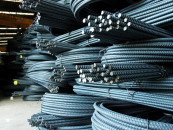Ukraine collects 2 million hours of drone footage to train AI for battlefield decisions
The data is said to help improve target identification, combat tactics, and weapon system efficiency

Ukraine is leveraging a valuable resource to advance its military capabilities in the age of artificial intelligence (AI) – millions of hours of drone footage collected from the frontlines of the ongoing war with Russia.
As warfare increasingly incorporates AI-driven technologies, Ukraine's drone footage archive is poised to play a key role in training AI models that can make decisions in combat situations.
Oleksandr Dmitriev, the founder of OCHI, a non-profit Ukrainian digital system, explained that his platform centralizes and analyzes video feeds from over 15,000 drone crews working across Ukraine’s battlefields. Since 2022, the OCHI system has amassed a staggering 2 million hours of footage from drones, a vast pool of data that will be used to train AI models to enhance battlefield decision-making.
Dmitriev referred to this footage as “food for the AI,” emphasizing the immense value of the data for AI training. “If you want to teach an AI, you give it 2 million hours (of video), it will become something supernatural,” he said.
The primary function of the system is to offer military commanders an overview of battlefield activity by displaying footage from multiple drone crews on one screen. However, over time, the team behind the system recognized that the drone video could serve as a critical record of the war, prompting them to store it for future use.
According to Dmitriev, an average of five to six terabytes of new data is added daily from the fighting.
This vast collection of footage will provide invaluable data for training AI systems in various aspects of military operations, such as combat tactics, target identification, and assessing the effectiveness of weapon systems.
Dmitriev highlighted that AI programs can study weapon trajectories and angles to determine the most effective ways to use certain systems.
In addition to training AI in combat-related activities, the collected footage can also help AI learn to identify different objects on the battlefield.
Samuel Bendett, a senior fellow at the U.S.-based Center for a New American Security, explained that such a large and varied dataset is crucial for teaching AI how to differentiate between objects such as roads, natural obstacles, or ambushes. “Humans can do this intuitively, but machines cannot, and they have to be trained on what is or isn't a road, or a natural obstacle, or an ambush,” Bendett said.
Ukraine’s defense efforts are also supported by another system called Avengers, which has been developed by the Ministry of Defense. The Avengers system centralizes and collects video from drones and CCTV feeds, though the Ministry has declined to provide additional details on this technology.
Previous reports have revealed that Avengers uses AI to spot approximately 12,000 pieces of Russian equipment every week. This system works in tandem with drone technology to enhance surveillance and target recognition.
AI is already being employed in various aspects of Ukrainian military operations. Numerous drones are using AI to autonomously fly into targets without human pilots. Furthermore, Ukraine is exploring the development of drone swarms, where an interconnected group of drones will execute commands from a single AI-driven system.
While Ukraine continues to refine its use of AI technologies on the battlefield, Russia has also integrated AI into its military strategies.
The Russian military has touted its use of AI, especially in its Lancet strike drones, which have proven lethal against Ukrainian armored vehicles.
Both nations are increasingly relying on AI technologies to augment their military capabilities, marking a new era in modern warfare. As the conflict progresses, the value of AI-driven systems and the data they generate will likely continue to grow, further shaping the future of combat.


















COMMENTS
Comments are moderated and generally will be posted if they are on-topic and not abusive.
For more information, please see our Comments FAQ